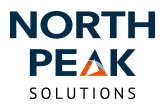
December 2021, North Peak hosted our quarterly meetup for organizations managing, implementing, or considering shared CRM solutions– Collaborative CRMs. At these meetups, a group of nonprofit executives and Salesforce admins, developers, and consultants discuss their experiences with Collaborative CRMs (CCRMs), ask questions, and share resources. If you’re interested in joining us for the next one, sign up here.
At our December meetup, Karen Pederson, Associate Director for the Minnesota Homeownership Center, joined us to discuss the Center’s project to design a housing counseling solution for their 36 member agencies.
About Minnesota Homeownership Center
The Minnesota Homeownership Center (MNHOC) empowers smart homeownership choices through education, research, and partnerships grounded in the belief that sustainable housing is a critical component of healthy communities. The Center is dedicated to serving lower-income households in communities of color. They offer housing counseling services that help people find homes, prevent foreclosure, and more!
The Recap
For this Q&A style session, we focused on the Center’s initiative to design a shared technology platform to manage housing counseling services across their network of 36 member agencies, something they started exploring in 2015. Their system wasn’t well equipped to help the team make informed decisions needed to improve their operations.
Before embarking on this project, the Center spent a great deal of time making sure they found a product that made sense for their team.
The Approach
For their collaborative CRM approach, the Center considered:
All-in-one approach: All 36 agencies operate out of a single, central Salesforce with appropriate security to limit each organization’s user access to just those records owned by their agency.
Distributed approach: Each of the 36 agencies has its own Salesforce configured to accommodate the Center’s data collection and reporting requirements. Data from those instances is periodically transferred to a central hub database for aggregation.
Hybrid approach: The majority of the network is on a central Salesforce (34), and the remaining portion (2) operates in a Distributed model with their own Salesforce. Data from distributed instances is periodically transferred to the central Salesforce for reporting at the Intermediary level.
The Center also considered that some of their member agencies were already using highly customized Salesforce instances, with a dedicated admin managing them. Rather than asking them to scale back and conform to one instance, they opted for a model where those orgs kept their systems. They ended up with a hybrid model (1 shared instance + 2 distributed instances).
Because the Center collects data from all orgs they provide pass-thru funding to, efficient and accurate data collection between the orgs was a top priority. They could quickly access data for those on the shared instance and set up some parameters to collect and aggregate data for the distributed orgs. The distributed orgs needed SF + NPSP + HomeKeeper, plus data submitted every quarter via an export/import process.
Outcomes
MNHOC and its agencies have seen an “overwhelming immediate impact,” according to Karen. For example, they can now tell stories with data like the different applicants in different stages, how clients are being paid or how payments are going out. And with COVID, they have experienced an increase in new requests for services that they have managed by expanding the core solution with new objects for new funding opportunities, something they couldn’t have accomplished in their old system. In addition, they have been able to quickly build capacity to help distribute funding from municipalities that couldn’t manage.
The Center plans to continue working on an automated way to capture data from distributed orgs in the coming year.
Open Discussion
The General discussion focused on issues with collecting data from distributed organizations in situations where those organizations make configuration changes (like editing picklists or field names). Recommendations for how to handle these issues included:
- Setting up automation in the distributed orgs to monitor field changes– e.g., a date field that updates when a particular set of fields has been changed
- Using a pre-validation process before running the data load in the central org, similar to the NPSP data load process
- Using staging tables for mass data loads, where both distributed and central orgs use staging tables that are populated based on a flow that monitors changes to a fieldset (for example); when errors occur as the data exported from one staging table is loaded into the central staging table, you can identify it immediately and re-run the import. This method offers an audit trail– you can track what the distributed org sent via its staging table, and what the central org received.
- Doing a direct sync between environments instead of employing an export/import process; however, authentication between orgs is tricky, and the potential for error not only increases, but the diagnostics necessary to sort out errors is harder
Resources:
We started a list of existing and needed resources here. Feel free to add! Also, check out this article by HomeKeeper to help you determine whether your org is ready to launch a Collaborative CRM Platform.
Thanks again to Karen Pederson and attendees for bringing their insights to this group.
If you have ideas for our next session, reply directly to this email or share in the Power of Us Hub group. If you think of people who’d be interested in this group, encourage them to join the Hub group and the listserv for updates and invites.

About North Peak
North Peak helps nonprofits and foundations increase institutional intelligence through healthy CRM (constituent relationship management) and/or GMS (grant management system) systems and practices. Contact Us to learn how we can elevate your organization's impact.

Recent Comments